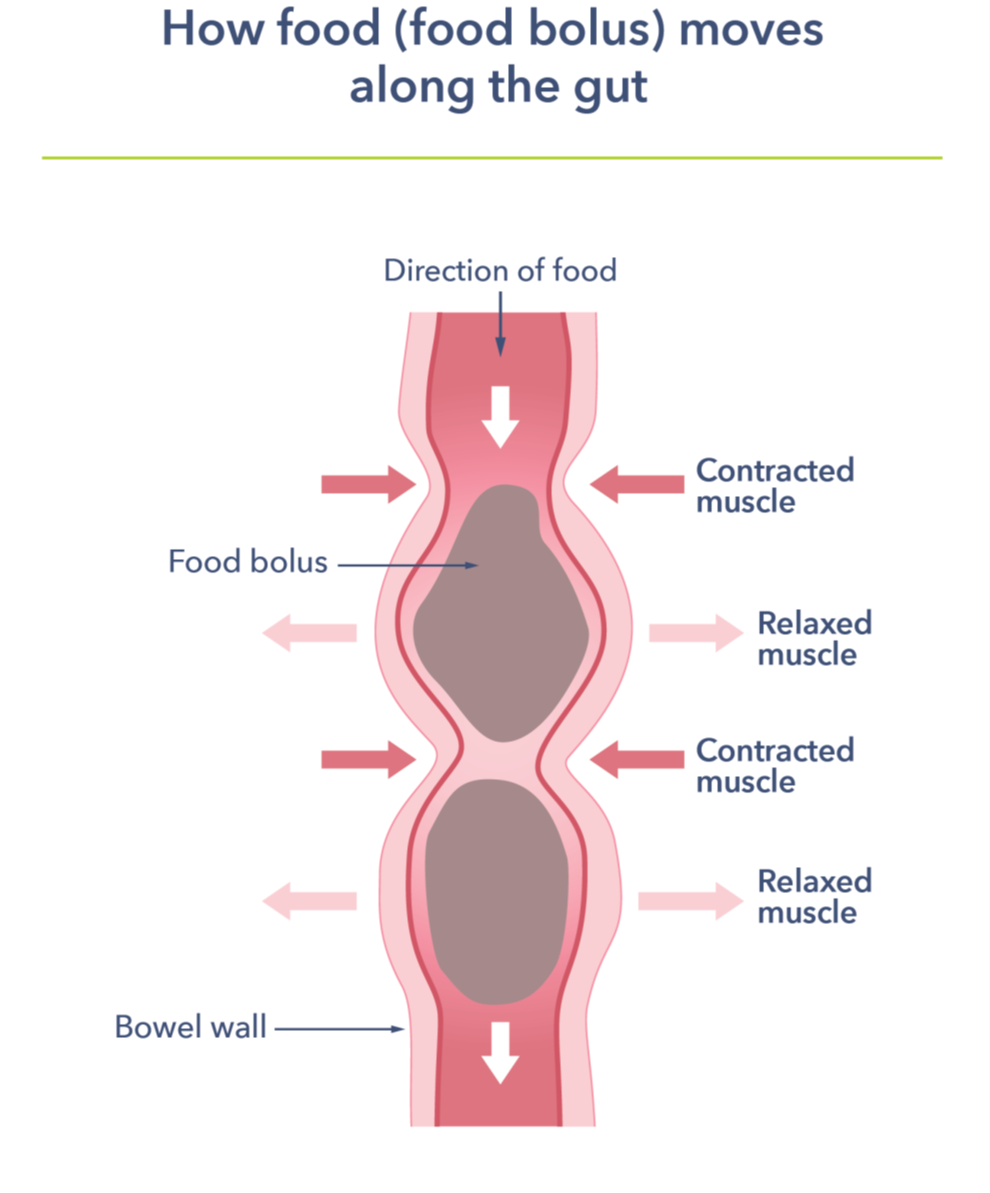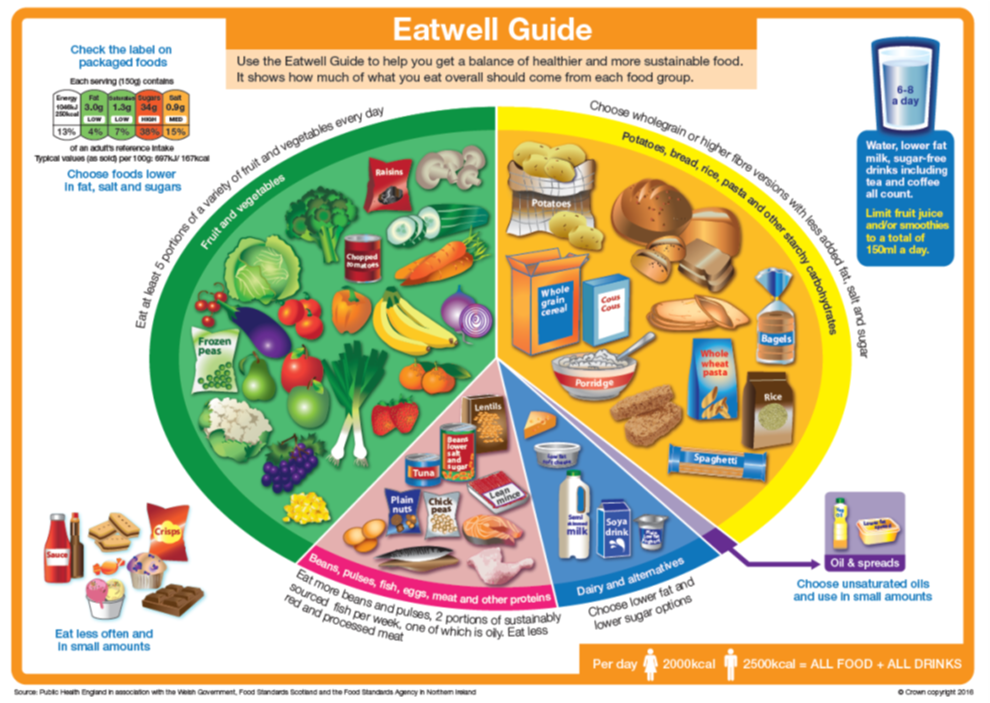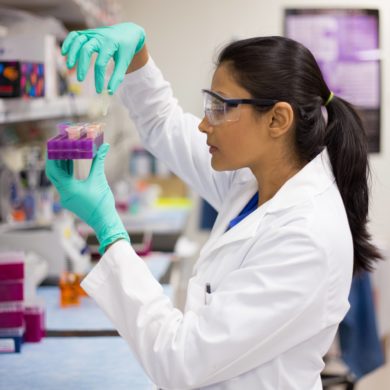Overview
This information leaflet is about healthy eating
This information is general information on healthy eating for the digestive system. The information may not be appropriate for someone diagnosed with a specific digestive condition. Where there is general information on diet and digestive conditions, this can be found on the relevant symptom or condition pages.
To keep your body healthy, it is important to follow a healthy, balanced and varied diet. A balanced diet includes a good variety of different foods. Healthy eating is part of a healthy lifestyle which can benefit your gut. Other lifestyle activities that are important include keeping active, limiting alcohol and avoiding smoking. These healthful approaches all contribute to a healthy digestive system.
Digestive System
The digestive system
The digestive system runs from the mouth to the anus. It includes the stomach, the large and small bowel. In addition, several other organs, including the salivary glands, liver, gallbladder and pancreas. These other organs are called accessory organs, as they also play a role in digestion. The job of the digestive system is to turn food and fluids into the building blocks that the body needs to work well. To do this, it produces and uses a variety of enzymes and other substances that aid digestion. Digestion means breaking food down to smaller molecules (parts) to help them be taken into the body.
On average food moves through the digestive system in the following times:
- 2 hours to pass through the stomach.
- 2 hours to pass through the small bowel.
- 20 hours through the large intestine and into the rectum.
But these are averages. It can take longer or shorter times for food to travel though. This is part of normal variation between people.
The length of the digestive tube from mouth to anus is 8 to 9 metres on average. Approximately seven litres of fluid are secreted by the digestive system and its accessory organs each day. When the system works correctly, food is broken down. This is so the nutrients can be absorbed into the body and unwanted products excreted. When one or more of the functions of the digestive system fail, symptoms and disease can develop.
There are many different processes which contribute to a healthy digestive system:
- Ingestion (putting food in your mouth) and digesting food.
- Mechanical digestion (chewing and food being mixed inside the digestive tract).
- Chemical digestion (digestive enzymes and substances breaking food down).
- Absorption (small molecules passing from digestive system into the body).
- Making and passing poo (stool or faeces).
Key components of the digestive system
Mouth
This is the beginning of the digestive tract. Food that is put into the mouth is broken down by chewing. This is called mechanical digestion. Various enzymes are secreted to help this breakdown. Saliva secreted in the mouth contains ‘salivary amylase’. This helps the digestion of carbohydrates to simple sugars. This is called chemical digestion.
Gullet (oesophagus)
Swallowed food and liquid are transported from the mouth to the stomach. This is through a tube called the gullet. Food is pushed down the gullet by muscular waves. The passage of contents is also helped by sitting upright when eating.
Stomach
The stomach stores and mixes food and liquid. Churning and mixing motions happen due to muscle contractions which is also part of mechanical digestion. Chemical digestion also occurs in the stomach. Food is mixed with gastric juices and digestive enzymes which help to break down food into smaller components. Hydrochloric acid is released by cells in the stomach wall. This is a strong acid which helps enzymes work and kills some unwanted bacteria. The surface of the stomach is protected from the action of the acid by a layer of mucus. The stomach then slowly lets the mixed food and liquid out into the top of the small bowel.
Small Bowel (intestine)
The main function of the small intestine is absorption of nutrients and minerals. Most of digestion and absorption occurs in the small intestine. This includes the digestion of proteins, fats and carbohydrates, which are called macronutrients. Some vitamins and minerals are also absorbed in the small intestine. These are called micronutrients because only small amounts of them are needed for a healthy body. Co-ordinated contractions of the small bowel wall squeeze to move food through. This action is called peristalsis. These movements happen in a wave pattern travelling down from one section to the next. The contractions occur behind the food (bolus), pushing it through the digestive system.

How food (food bolus) moves along the gut.
Large Bowel (intestine)
The main function of the large intestine is to remove water and salt from its contents. This hardens the stool so it can be excreted from the body via the rectum and anus. It is also the main area where microbes are found. These organisms are very important for health. They use the fibre that is not absorbed into the body for energy. They also produce some vitamins, communicate with the immune system and make substances that keep the gut healthy. It was once thought that the only function of the large bowel was to produce waste matter. However, recent research suggests that gut microbes play an essential role in our overall health and wellbeing and must be considered in healthy eating strategies.
Accessory organs
Liver
The liver has 500 functions. These include:
- Help with digesting food.
- Storing fuel (glycogen) for the body.
- Helping the blood to clot.
- Removing or processing alcohol, toxins, and medicines from the body.
The liver also makes bile. Bile is stored in the gallbladder before passing into the small bowel, where it helps in digesting fats.
Pancreas
The pancreas has two main functions. Firstly, the production of digestive enzymes, which pass into the small bowel to help the chemical digestion of food. Secondly, the production of hormones, such as insulin, which help control blood sugar levels.
Healthy Eating
Why is healthy eating important?
Eating a healthy and varied diet can improve general well-being. Good nutrition is essential to get the nutrients to keep the body healthy. Good nutrition also avoids substances that may be harmful. A nutritious varied diet and regular exercise can help you achieve and maintain a healthy body weight. A healthy diet also helps lower the chance of developing some chronic conditions, such as diabetes, heart disease and strokes. In addition, this may reduce the risk of developing certain cancers and types of dementia. Conversely, a poor diet can lead to weight gain which may lead to increased risk of developing certain long-term diseases. Any of these health conditions can lead to a poor quality of life and other health complications. This can result in a decreased life expectancy.
What is a healthy diet?
A healthy diet means a balanced diet. It involves eating a wide range of different foods from a variety of food groups. It also includes eating food in adequate portion sizes.

This picture is a representative of the ratios of different food groups to eat every day for a balanced diet.
A balanced diet is essential for good health. Include a variety of foods from each group to achieve this. Starchy foods, vegetables, and fruit should make up the bulk of meals. They contain fibre, an important nutrient in a healthy diet. Fibre is important for good gut health and functioning. It also provides other benefits, such as a lower risk of developing heart disease, Type 2 diabetes, and bowel cancer.
Green Section – fruits and vegetables
Fruits and vegetables should be eaten regularly. At least five portions per day. A portion is either 80g, small handful or 2 to 3 tablespoons. You should aim for as much variety as you can. It also includes frozen and tinned options in natural juice. This might include mixed frozen fruit and vegetables for example.
Yellow section – starchy carbohydrates
Starchy foods should be consumed regularly. Include one option per meal. Include wholegrain versions of bread, rice, oats and other grains.
Pink section – protein foods
Protein foods such as beans and pulses are also good sources of fibre. This group also includes fish, eggs, and meat. The World Health Organisation recommends avoiding processed meat. Examples are such as sausages, ham, bacon, salami, and cured red meat. There is an increased risk of developing bowel cancer with these foods. Red meat should be limited to no more than three portions per week. A portion is 70g per day or 160g three times a week. To avoid excess fat in the diet, choose lean meat or remove excess fat and the skin from chicken.
Blue section – dairy foods
Dairy foods are rich in calcium, needed for healthy bones and teeth. It is recommended to have three servings a day from this food group.
High-fibre foods
High-fibre foods are beneficial. They have a lower glycaemic index. This index measures how fast foods cause blood sugar to rise after eating. There are different types of fibre. Each type behaves differently in your gut. Fibre types, such as cellulose, aid in stool size and passage, preventing constipation. Gut microbes digest prebiotics. This produces beneficial substances for gut health but can cause bloating. People respond differently to different fibre types. Many foods contain more than one type. Increase intake slowly to allow your gut to adjust. Guidelines recommend aiming for 30 grams of fibre a day for adults and adolescents aged 16-18 years.
Purple section – fats and spreads
Only a small proportion of foods should be made up of foods high in fat.
To maintain a healthy diet and lifestyle, it is important to be aware of other factors. These are:
- Maintaining a fluid intake of around two litres per day.
- Monitor portion sizes. A meal rule of thumb is this: use a fist-sized of carbohydrate and a palm-sized of protein.
- Minimizing fizzy or sugary drinks. Limit fruit juice to a small glass (100ml).
- Limiting alcohol intake to no more than 14 units weekly.
- Reducing intake of high fat and high sugar foods.
- Aim for less than six grams of salt per day.
- Eating at least two portions of fish per week. One choice should be oily fish. For example, salmon, mackerel, and trout are oily fish. You can also eat sardines, pilchards, kippers, or fresh tuna.
- Replace butter and lard with olive oil and vegetable oil. These are polyunsaturated or mono-unsaturated fats.
Can a vegetarian diet be healthy?
A balanced vegetarian diet can be healthy. The aim is to also to eat a variety of foods. For example, beans, lentils, pulses, cheese and eggs. These foods are good sources of protein. Vegans need to consider their diet carefully. A vegan diet excludes all animal products. If you are vegan, you should take a multivitamin. If you are struggling to eat a variety of foods, consult a dietitian. Your GP can refer you.
Is a ‘clean diet’ healthy?
Many people follow the popular trend of a ‘clean’ diet. They focus too much on foods considered good for health. They restrict their diet in other areas. But, it is crucial not to cut or remove needed food groups. This can cause malnutrition. It can also lead to long-term health problems. ‘Clean’ assumes that there are bad and good foods. Some people take this to the extreme. They may develop an eating disorder. It is called orthorexia. Orthorexia is an excessive focus on healthy food. It is best to avoid diets by unqualified influencers. Instead, eat a balanced diet and live a healthy lifestyle. This is best for ongoing health. All diets need research. This research ensures their effectiveness and safety. If you are concerned about disordered eating, ask your GP for help.
Do I need to take vitamins or supplements?
A healthy diet is key. It has a balance of vitamins and minerals. But supplements have no value for healthy people. They can cause side effects too. Vitamin D is an exception for UK residents. This is especially true in autumn and winter. The sun is not strong enough for skin to produce enough. The NHS recommends adults to take a vitamin D supplement. It should contain 10 micrograms/400IU. This is especially important during these months. Others who may need more vitamin D include:
- Those who cover up.
- People that live in care homes or shared accommodation.
- People who have darker skin. For example, people of African, African Caribbean, or South Asian descent.
- Those who were told by a doctor or dietitian to take it.
Food monitoring – how and why?
A food diary can help show where diet improvements are needed. You can track your food and drink for two weeks and one weekend. Check this against the Eatwell guide image. Then make improvements to your diet. This can help you eat more fibre. It can also help you eat less red and processed meat. Changes can improve your health.
If you have stomach problems or suspect food intolerance, keep a food and symptom diary. It can help find the problem food. Record the food and type of symptoms and timings. The same food type can cause symptoms one day and not the next. This could be because you have eaten more of it. Check the amount you eat too. Don’t change your diet without asking your GP. They may need you to eat specific foods for tests. An example is gluten for coeliac disease. Plus, don’t buy food intolerance tests, as they won’t show the problem. A dietitian can help you to identify food intolerances. Your GP can refer you to one.
Dietary considerations
Can stress affect my diet?
Stress is a natural body response. It helps us handle difficult situations. Constant stress can cause stress-related symptoms. It can also harm health, including the digestive system. Stress can also affect your diet. It can make you miss meals or eat unhealthy foods. The gut and brain are closely linked. A healthy diet can help reduce stress symptoms. Managing stress involves exploring different approaches. These are available online and in books. You could start by visiting the NHS website for how to recognise stress and how to manage it.
Food Hygiene
HOW IMPORTANT IS FOOD HYGIENE?
Poor food hygiene can increase the risk of food poisoning. Food poisoning is usually brief. But, it can be unpleasant. It is important to wash hands after using the toilet and before handling food. Food should be carefully stored. This is especially true in hot weather and for raw meat. It is best to follow food manufacturers ‘use by’ and ‘best before’ dates. Use by dates tell you at what point the food is no longer safe to eat. Avoid consuming meat after the stated use by date. Re-heating food to a temperature of 75 degrees C kills all bacteria.
Raw milk can cause food poisoning. This is because it has not been pasteurized. It is better to choose heat-treated milk. Heat treatment includes pasteurization. It also includes ultra heat treatment (UHT).
When should I see a GP about stomach trouble?
Gut problems are common. Report them to a doctor if:
- There are sudden changes in bowel function. For example, diarrhoea or constipation.
- Bleeding from the back passage.
- Increasing heartburn.
- Stomach pain.
- Weight loss without trying.
- Persistent vomiting.
- Difficulty swallowing.
Also report if a pharmacy remedy has not improved symptoms for over two weeks. These symptoms are worrisome. They are more concerning if a family has had serious gut illness.
Research
The gut and food have a complex relationship. This needs more research including:
- Understanding what the impact of popular diets are on gut health.
- How diet and the gut microbiome interact.
- The influence of diet on feeling hungry and feeling full.
- The interaction between diet and exercise.
- The role of food preservatives in gut disorders.
- What dietary factors might cause digestive disorders. Examples include reflux, diverticular disease, and gallstones.
 ABOUT US:
ABOUT US:
Guts UK’s vision is of a world where digestive diseases are better understood, better treated and where everyone who lives with one gets the support they need. We fund life-saving research into diseases of the gut, liver and pancreas.
Champion our cause; help us fight digestive diseases and change the lives of millions of people in the UK by supporting our work today.
DISCOVER MORE:
Copyright © 2024 Guts UK. This leaflet was published by Guts UK charity in 2024 and will be reviewed in 2026. The leaflet was written by Guts UK and reviewed by experts in healthy eating and has been subject to both lay and professional review. All content in this leaflet is for information only. The information in this leaflet is not a substitute for professional medical care by a qualified doctor or other healthcare professional. We currently use AI translation tools on our website, which may not always provide perfect translations. Please check for further explanation with your doctor if the information is unclear. ALWAYS check with your doctor if you have any concerns about your health, medical condition or treatment. The publishers are not responsible or liable, directly or indirectly, for any form of damages whatsoever resulting from the use (or misuse) of information contained or implied in this leaflet. Please contact Guts UK if you believe any information in this leaflet is in error.
